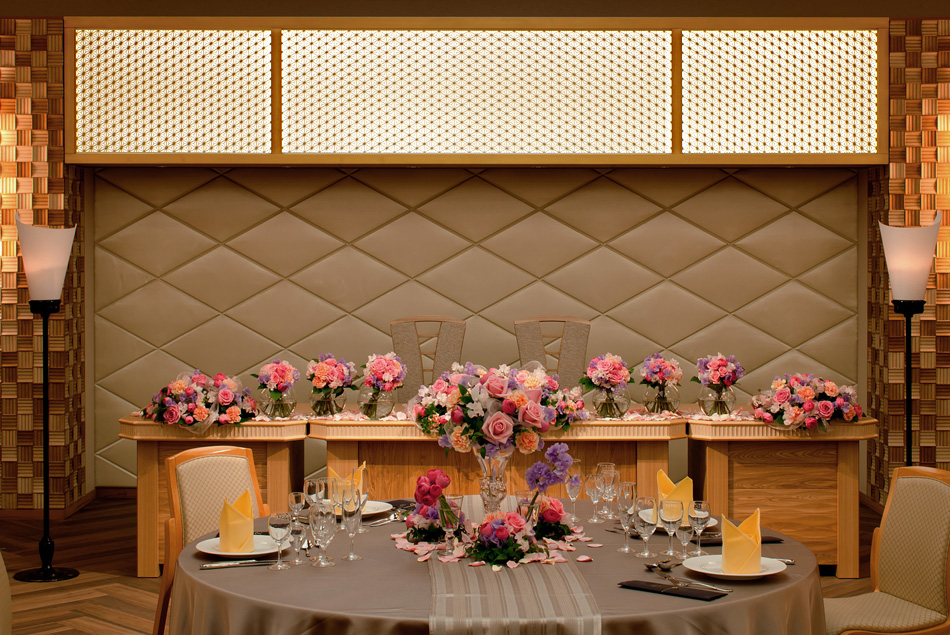Information
現場名:高岡 射水神社樣 バンケット
空間デザイン/有限会社エッグクリエーション様 施工/株式会社北陸建材社様
組子文様/麻の葉
Concept
奈良時代以前に創建されたとされる富山県・射水神社様に、「麻の葉文様」の組子を納入させていただきました。
日本の神道において、「麻」は穢れを払うものとされてきました。
現在も神社では「麻」は、聖域を囲む結界のための「麻紐」や、神殿に吊るされる「鈴の縄」の素材として使用されています。
福井県の鳥浜貝塚遺跡では、縄文草創期(約1万年前)のものとされる「麻縄」が見つかっており、日本人と「麻」との関わりは、神道や伝統的な産業などを通じて1万年近く続いてきました。「麻の葉文様」が日本を代表する文様というのも、こういった歴史背景があるからかもしれません。
Asanoha’s Kumiko was supplied to the Imizu Shrine in Toyama Prefecture, which is said to have been built before the Nara Period.
Our Asanoha’s Kumiko is supplied to the Imizu Shrine in Toyama Prefecture, which is said to have been built before the Nara Period.
In the Japanese Shinto religion, hemp was used to ward off defilement.
Even today, hemp is used in shrines as a material for hemp cords used to ward off defilement in the sanctuary and for bell ropes hung in temples.
Hemp ropes were found at the Torihama shell mound site in Fukui Prefecture, which are believed to date back to the early Jomon period (approximately 10,000 years ago). The relationship between the Japanese people and hemp has continued for nearly 10,000 years through Shintoism and traditional industries.
This historical background may be the reason why the hemp leaf pattern is one of the representative patterns of Japan.

